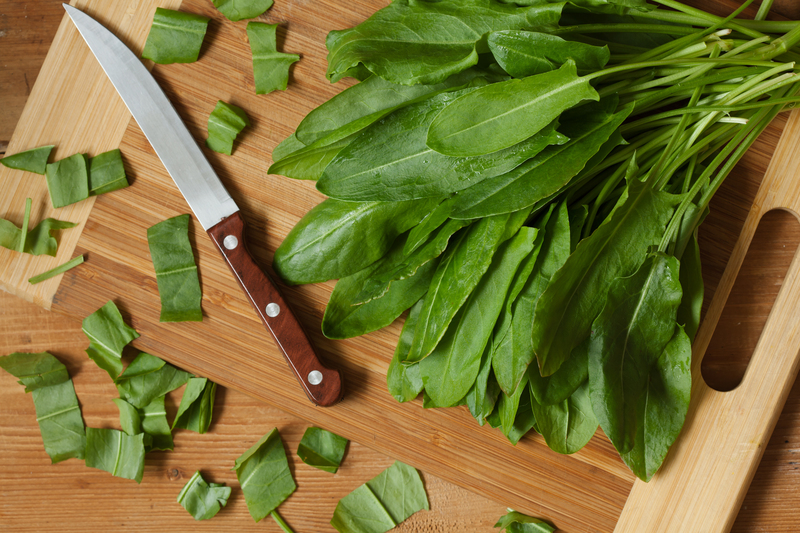Decoding the Secrets of Hedge Trimming Aesthetics
Posted on 21/08/2025
Decoding the Secrets of Hedge Trimming Aesthetics
Beautifully manicured hedges are a hallmark of exceptional landscaping. They enhance curb appeal, frame outdoor spaces with elegance, and serve as living works of art. The true artistry of hedge trimming aesthetics goes far beyond mere maintenance--it is a careful and creative process that blends horticultural knowledge with design flair. Decode the secrets of sculpting hedges to perfection and elevate your garden or property to a new level of sophistication.

The Art and Science Behind Hedge Trimming Aesthetics
Mastering the aesthetics of hedge trimming requires both an understanding of plant biology and an artistic vision. The intersection of these two disciplines results in hedges that are not only healthy but also visually compelling.
Why Hedge Trimming Matters:
- Shape definition: Carefully trimmed hedges offer geometric order or whimsical forms, providing structure to your landscape.
- Encouraging dense growth: Strategic cutting stimulates lush, thick foliage.
- Healthier plants: Removing dead wood and controlling disease promotes longevity.
- Seasonal highlights: Trimmed hedges can showcase blooms or berry displays at their peak.
Hedge Trimming Styles: Shaping Your Outdoor Space
Whether you prefer classic symmetry or modern fluidity, the aesthetics of hedge shaping play a vital role in garden design. Here's an in-depth look at popular styles:
- Formal hedges: These are meticulously pruned to crisp lines and geometric perfection--think rectangles, squares, or spheres. Perfect for traditional gardens or stately homes.
- Informal hedges: Allowed to grow more naturally with soft undulating shapes, these hedges create a relaxed, woodland vibe.
- Topiary hedges: Showcase artistic flair with fanciful forms--animals, abstract shapes, or intricate patterns.
- Layered hedges: Combine multiple layers of different plants or shades of green for a sense of depth and visual interest.
The Foundations of Perfect Hedge Trimming
Before exploring creative styles, it's essential to grasp the horticultural underpinnings of hedge trimming aesthetics.
Choosing the Right Hedge Plant
The plant species determines much about your hedge's final look and maintenance needs. Common choices for their form and foliage density include:
- Boxwood (Buxus sempervirens): Ideal for tight, formal trims and topiary thanks to its small leaves and slow growth.
- Yew (Taxus baccata): Dark green, dense, and highly resilient to frequent cuts--perfect for stately designs.
- Privet (Ligustrum vulgare): Fast-growing and forgiving, favored for quick privacy hedges and shaping versatility.
- Leylandii: Vigorous and tall, preferred for privacy screens or grand formal statements.
- Beech and hornbeam: Deciduous but often hold on to coppery leaves through winter, adding year-round color.
Understanding Seasonal Growth Patterns
Knowing when to trim can make or break your hedge's health and beauty:
- Spring: The best time for a major shaping, as plants are entering their vigorous growth period.
- Summer: Light touch-ups to maintain lines and density.
- Late Autumn: Avoid heavy trims, as new growth may not harden before winter.
Tools of the Hedge Trimming Trade
- Hand shears: Provide precise cuts and are essential for detailed work.
- Hedge trimmers: Electric or petrol-powered, these are great for long stretches but require a steady hand for even aesthetic results.
- Loppers and secateurs: Useful for thicker branches or spot-trimming.
- String and stakes: Help achieve perfectly straight lines for formal styles.
Aesthetic Principles of Hedge Trimming
The Golden Rules of Hedge Design
Let's uncover aesthetic elements that define a truly stunning hedge:
- Proportion: Ensure the hedge complements--not overwhelms--its surroundings. Visual harmony is key.
- Repetition: Consistent shapes and heights provide a sense of order and guiding flow in your garden.
- Balance: Pair dense, sculpted hedges with looser planting for contrast.
- Focal points: Use topiary or arches as eye-catching highlights in your design.
- Negative space: Let open lawns or paths help hedges "breathe" for a pleasing aesthetic rhythm.
Techniques for Flawless Aesthetic Results
Skillful technique elevates your hedge from functional to fabulous:
- Slight taper: Make the base slightly wider than the top. This ensures sunlight reaches all leaves, keeping the hedge full from top to bottom.
- Step-back review: Frequently step back to check lines and symmetry from a distance--you'll catch errors early.
- Use guides: For formal shapes, string lines or plywood templates help achieve perfect consistency.
- Prune little, often: This avoids stress on the plant and keeps edges crisp all season.
- Clean, sharp tools: Sharp blades result in neat cuts that heal rapidly, minimizing browning.
Common Hedge Trimming Mistakes to Avoid
- Trimming too late in autumn: Late cuts invite frost damage and unsightly dieback.
- Flattened tops: Flat horizontal tops shed water poorly and may lead to rot. Slight rounding helps durability and style.
- Ignoring the bottom: Don't let lower branches lose light, or the base will become thin and leggy.
- Heavy-handed pruning: Removing too much foliage in one go stresses the plant and ruins symmetry.
Advanced Aesthetics: Creative and Modern Hedge Trimming
Exploring Topiary Art: Imagination in the Landscape
The highest form of aesthetic hedge trimming is topiary, where shrubs are coaxed into ornate or whimsical shapes:
- Animal forms: From abstract peacocks to playful elephants, these forms act as striking garden features.
- Spirals and geometric shapes: Add drama to entrances or highlight a pathway's curve.
- Lettering and symbolism: Personalize your property with family initials or meaningful motifs.
Topiary requires patience, sharp tools, and regular touch-ups to maintain the integrity of complex forms.
Living Hedge Sculptures: The New Wave
Modern gardeners are experimenting with hedges as living sculptures. These often break away from symmetry, embracing fluid, organic forms that echo waves, clouds, or cascading water. This approach demands a deep understanding of each plant's growth pattern, careful planning, and attentive ongoing maintenance.
Visual Illusions and Practical Design Tips
The Optical Principles of Hedge Aesthetics
Learning how to use visual illusion can enhance your landscape:
- Narrowing a space: Taper the hedge slightly inward or down the length to draw the eye toward a focal point.
- Expanding a space: Use curved lines or staggered hedge heights for a sense of openness.
- Highlighting features: Frame statues, fountains, or doorways with symmetrical arching hedges for a dramatic reveal.
Matching Hedge Styles with Your Home's Architecture
- Modern homes: Clean lines and low, blocky hedges echo the minimalism of contemporary architecture.
- Victorian or historic homes: Intricate topiary, balled boxwoods, or parterre knot gardens nod to classic elegance.
- Cottage garden: Informal, gently billowed privet or flowering hedges blend seamlessly with a relaxed garden layout.
Year-Round Care for Lasting Hedge Elegance
Feeding and Mulching
Healthy hedges maintain a glossier, more vibrant finish. Apply a balanced fertilizer in spring and mulch annually to retain moisture and suppress weeds.
Watering Wisely
Deep, infrequent watering encourages strong root systems. Avoid shallow, frequent sprinkles, which may encourage surface growth at the expense of overall health and appearance.
Spotting and Curing Common Hedge Problems
- Browning tips: Often caused by dull blades or overzealous trimming. Ensure tools are sharp and cut sparingly.
- Patchy growth: May indicate soil compaction or nutrient deficiency. Aerate soil and supplement as needed.
- Disease or pests: Early intervention is key. Remove affected material and consult with a horticulturalist for chronic cases.
Sustainability and Eco-Friendly Hedge Aesthetics
Modern hedge trimming aesthetics can blend glamour with green-minded gardening.
- Native species: Favor local plant varieties for disease resistance and support of wildlife.
- Pollinator-friendly hedges: Incorporate species such as hawthorn or holly that offer nectar and berries.
- Low-maintenance designs: Allow some sections to stay informal for seasonal flowers and habitat.

Frequently Asked Questions About Hedge Trimming Aesthetics
How often should I trim my hedge for best aesthetics?
For formal hedges, trimming two to three times per growing season maintains sharp lines. Informal hedges can often be pruned annually to control shape and size. Young hedges may require more frequent attention to establish their desired form.
Can I revive a neglected or overgrown hedge?
Yes--rejuvenation pruning can bring most hedge species back. Cut back hard in late winter or early spring, allowing new buds to form from old wood. Note that recovery can take one to three years, so patience is essential for restoring both health and aesthetics.
What if my hedge starts to look "thin" or patchy?
This usually signals a lack of sunlight to the lower branches, typically caused by incorrect trimming angles. Correct with a broader base and thinner top to improve light penetration and encourage filling out.
Are there particular techniques for flowering or berry-producing hedges?
Absolutely--many such hedges (like forsythia or holly) should be trimmed right after flowering or fruiting to avoid removing buds set for the following year's display.
Conclusion: The Living Legacy of Beautiful Hedges
Decoding the secrets of hedge trimming aesthetics is an evolving journey--one that rewards keen eyes and patient practice. Whether shaping precise lines for a classic look or crafting freeform sculptures for a modern statement, the core principles remain the same: respect your plants, embrace creativity, and cultivate regularly.
With each skillful cut, you're not only maintaining greenery but creating a living legacy that enhances both your home and the broader landscape. Implement these tips, experiment with new shapes, and let your hedges become testaments to the enduring artistry of garden aesthetics.

